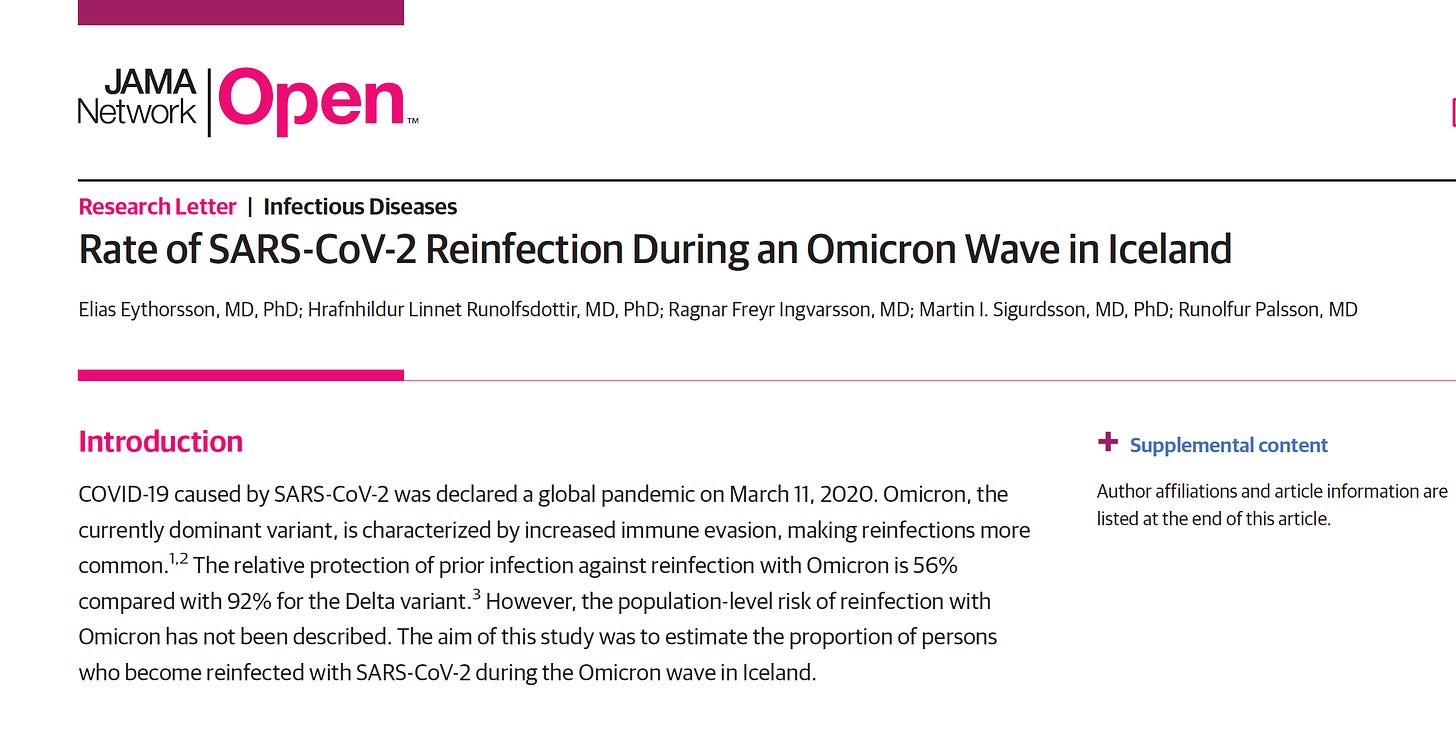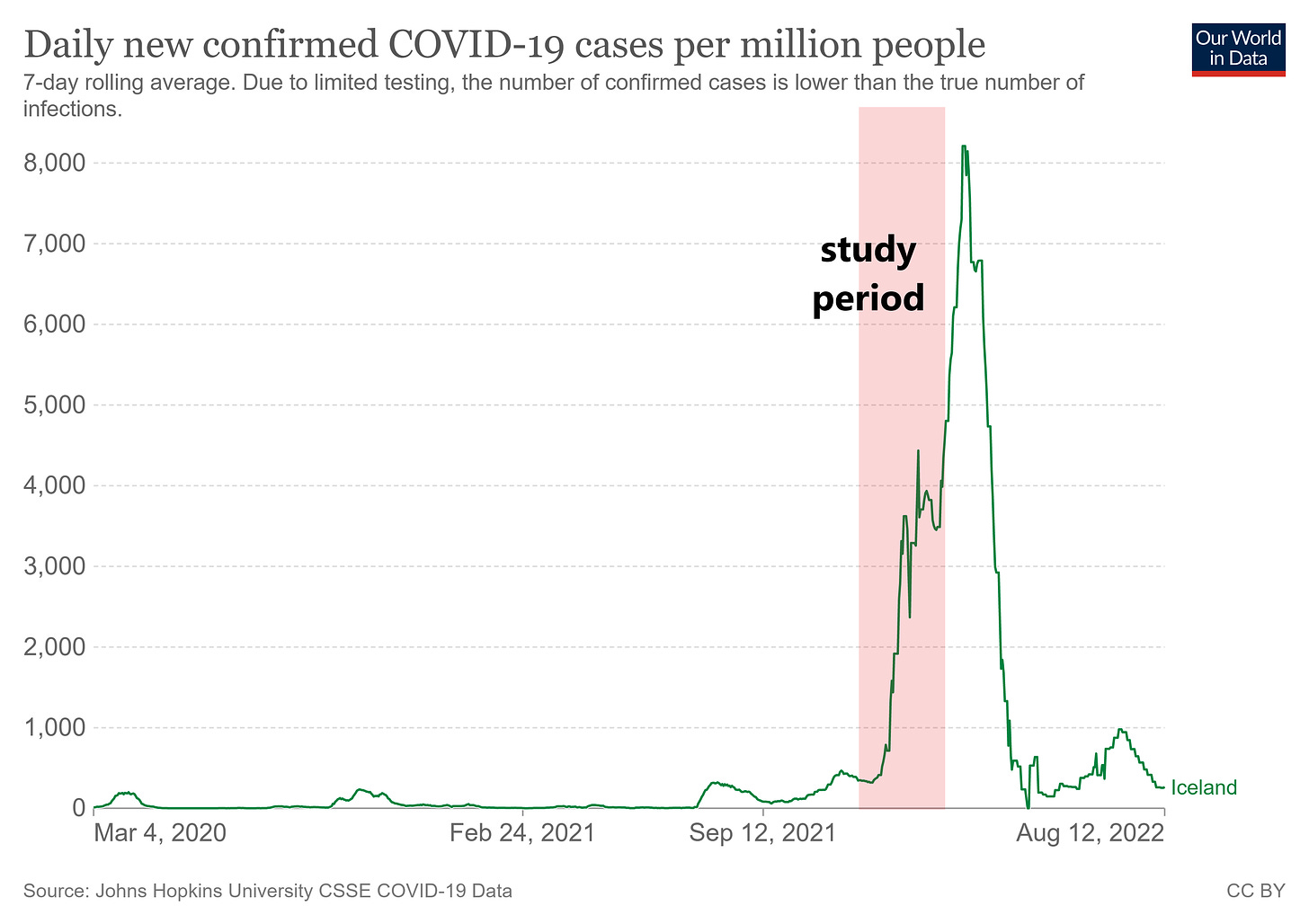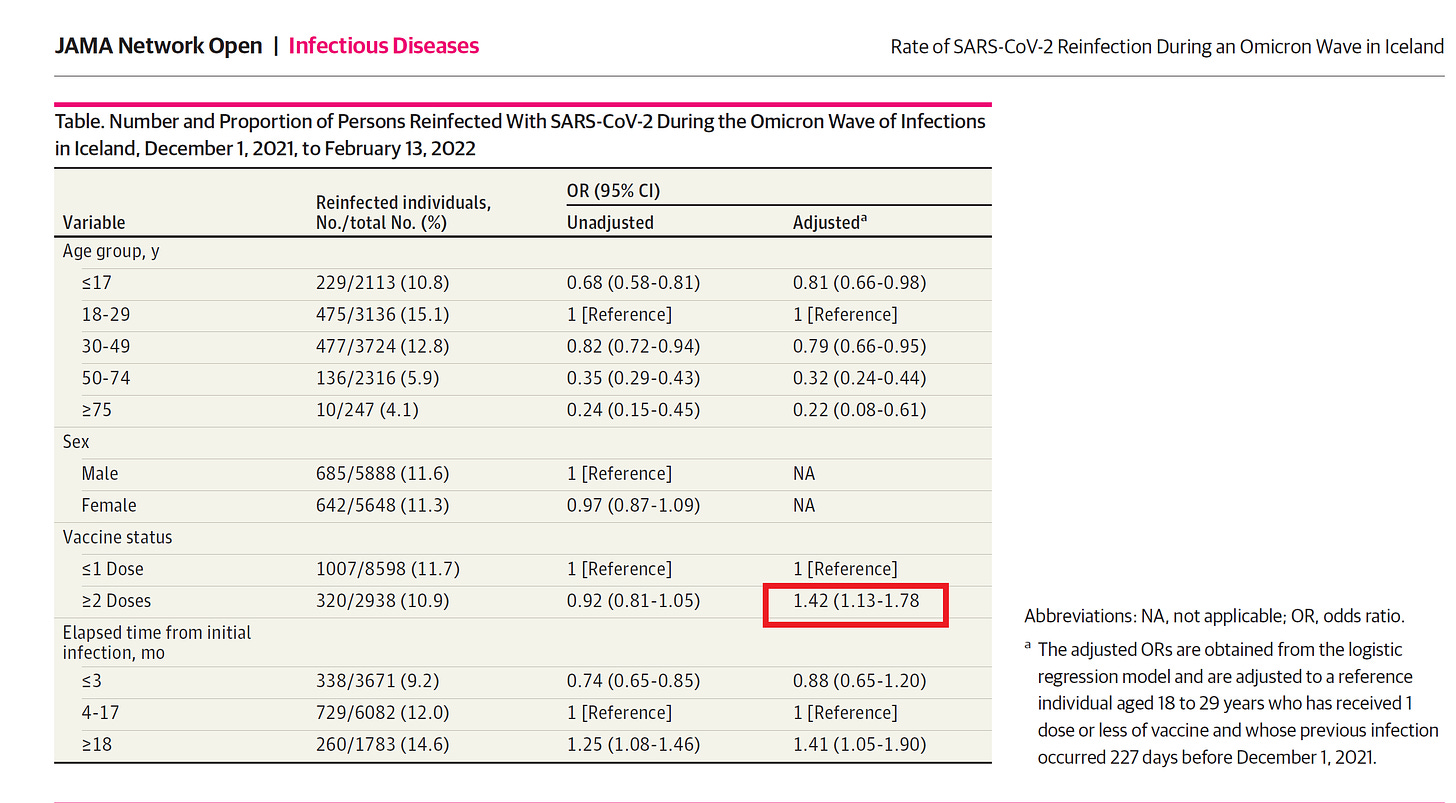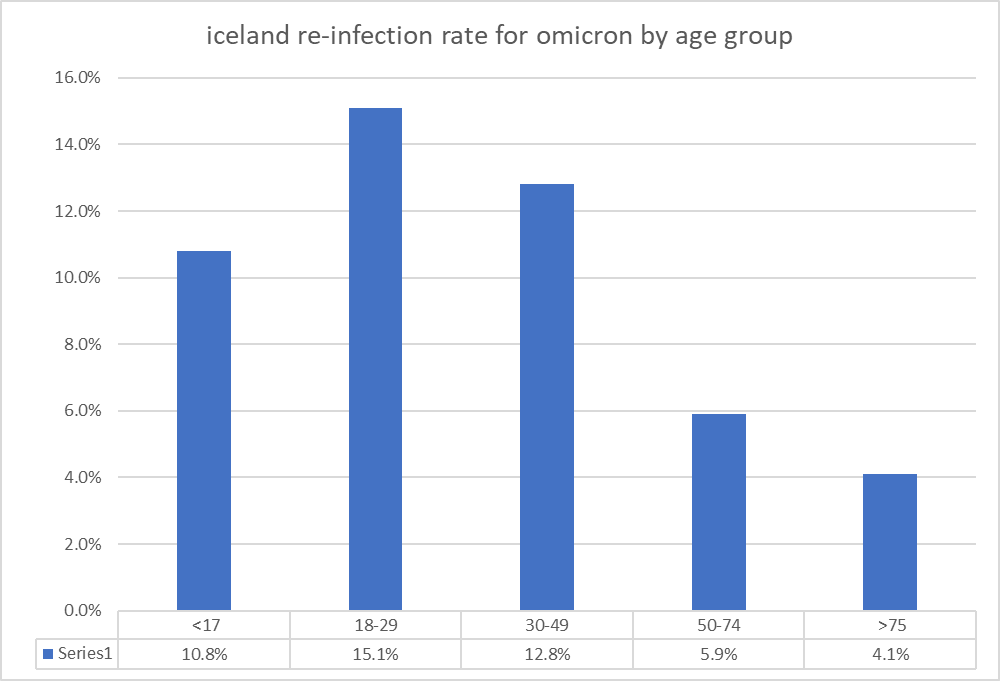
iceland study shows 42% higher risk ratio for covid re-infection among the vaccinated
more viking honesty undermines CDC narratives but i'm not sure how much this really tells us
we live in a time of widespread data suppression and manipulation. it’s become so de-rigueur in much of the west that the reflexive tendency is to doubt anything and everything. data series keep being disappeared or tainted with poor procedures and handling.
but more so than most, the nordic nations have tried to play it straight. their health systems seem more interested in actual answers that in propping up positional narratives and this has left their scientists possessed of a level of freedom not seen on our own shores. you can simply do the work, get the result, publish, and start a dialogue. you are not shunned and silenced, your grants taken and tenure terminated.
and perhaps we can see why those seeking to prop up the vaccine narrative are so desirous of preventing an honest look. because they keep taking looks at things like THIS.
several folks, including gatopal™ igor have spoken on this, but i wanted to toss in my 2c because i have some concerns about the quality of the evidence this study provides. it foots with several others and seems of a piece with much of what i have seen, but there is too much about its process and cohorting that we do not know for it to really rise to the standard of strong or possibly even meaningful evidence.
that said, if nothing else it’s a useful case study on things to assess evidence and how to read studies, so let’s look.
the study design is straightforward.
they took 11,536 people with past covid positives by PCR and followed them thru early omicron in iceland (dec 1 2021 to feb 13 2022)
it’s not clear to me why they ended it when they did or what effect that may have had. but it does seem like an odd end date given the epidemiological curves.
it’s also not remotely clear to me why they chose the classification buckets they did. instead of “no vaccine” vs “1 or more doses” as would seem fitting for any meaningful bayesian analysis of groups, they chose to compare 1 or fewer to 2 or more.
this likely injects large pro-vaccine bias as the single dosed have tended to be among the worst performers overall in many studies. why they should be bundled in with the unvaccinated is a highly relevant question. i see no end that this serves save trying to prop up notions of vaccine efficacy and this seems an odd choice and a significant failing in the study. can anyone think of a good reason to use this grouping other than “it’s how pfizer wanted to group terms for studies”? i cannot.
the data from the study is summarized here:
a couple of things pop.
first, re-infection was most common in the 18-29 year old cohort and the rate was nearly 4X the 75+. why this would be is not immediately clear to me. perhaps it’s social mixing, perhaps variance in testing rates, perhaps it’s a function of who had had covid more recently. but right away one starts to see some real potential issues around capture rates and a lack of randomization.
also, the 75+ group is only about 10% the size of the others.
there is a great potential for skew here:
the cohort itself was also a bit odd in that only 25.5% were double dosed or more vs 71.1% of the icelandic population. i suspect this may have to do with people there adhering to the more sensible and historically typical pattern of “not getting vaxxed if you’ve already had the disease” which was often a recommendation in nordic countries (though i am not sure what icelandic officials suggested in that regard) but it could be a lot of things.
what, if any, effect this might have is unclear, but it does mean we’re looking at a pretty non-representative sample.
the key claim of the study is the red box.
when you adjust for age and normalize to a reference individual of 18-29 years, you get a 1.42 risk ratio for 2 or more doses vs 1 or fewer.
the 95% confidence interval is 1.13-1.78 which makes this result statistically significant though they did not reference a p value.
the result (if one takes it at face value) is striking: this is either immune fixation or immune suppression. those who got jabbed were far more likely to get a second case of covid than those who did not even if we salt the unavaxxed by adding the single dosed.
but i think we need to be careful here. i’m not sure we can really hang our hat on this one.
i would love to see this data segmented by age cohort as a validation method and suspect it might be quite revealing. i’m not sure why the authors did not include it to help assess their age adjustments, for if there is a weakness to be found in this study it’s likely to be there in some sort of weighting bias or simpson’s paradox.
the cohorts (vaxxed vs unvaxxed) are not balanced for age, risk, or other status. there is no randomization and we have no idea what is lurking under the covers in terms of injected bias and divergence.
and this may matter a lot because the whole result of the study seems predicated on “adjustment” to purportedly mitigate these issues.
i always get pretty nervous about studies where the unadjusted risk ratio result is one side of unity and the adjusted result falls to the other as occurred here.
it means you’re literally flipping the outcome by applying a process to the data. when this happens, you need to be very, very sure that the data adjustments you applied were sound.
unadjusted risk ratio (to the left of the red box above) was 0.92 (0.81-1.05 not stat sig from zero effect) which means the whole “signal” comes from the adjustment.
that makes it A LOT harder to be sure you know what you are measuring especially as the raw data and adjustment method were not shared. it becomes something of a black box.
we know quite little about the underlying risk balance in the cohorts and possible selection bias in vaccination choices. the age variation was also so wide that a few more vaxxed elders that got re-infected could really skew an outcome as they might carry ~4X the weight of a 20 year old (and because the group was 90% smaller than others, it would be expected to have the potential for more variability (higher sd).)
perhaps owing to the conclusion and the paucity of similar work, this study is a result a lot of people seem taken with and that does find alignment with a great deal of other data and the idea that the jabs are making natural immunity less potent, but the quality of this evidence is not terribly high and numerous confounds appear possible.
i’m just not sure we can really say much from it one way or the other.
we certainly cannot rule out the conclusion it reached, but i’m just not sure how sound it is and would need more granular data to develop a stronger opinion.
this study seems like a possible piece of mosaic data, but without knowing a great deal more about cohort composition and especially in light of such wide infection rate variance by age group and such profound risk ratio effect from age adjustment, it’s hard to call this terribly definitive however tempting that may be.
the most important confirmation bias to keep an eye on is always one’s own.
that said, this is a useful idea that seems well worth pursuing using better balanced study structure that would not require so much post facto adjustment. it’s one the CDC and US universities ought to be all over.
their lack of work or even interest here speaks volumes because, of course:
the easiest way to avoid finding out what you don’t want to know is not to ask.























I have a word....the word is malignorant.
It's an amalgam of the words malevolent and ignorant (or could it be malignant and ignorant?), and is to be used to describe the "leadership" that we were subjected to during the covid insanity, especially that which came from "public health authorities".
Living in the People's Republic of Silicon Valley, most of the people I know are jabbed to one extent or another.
Without exception, every single one of them has gotten Covid, many of them twice. And yet many are lining up for another jab.
Then we have Comrades Biden, Fauci et. al. all incanting gratitude to the Vax deity (h/t eugyppius) for getting a jab that did not protect them.
We truly live in surreal times.
"The object of life is not to be on the side of the majority, but to escape finding oneself in the ranks of the insane."
~ Marcus Aurelius